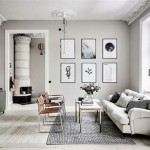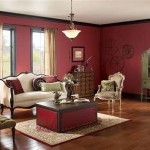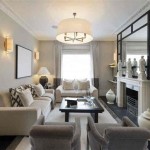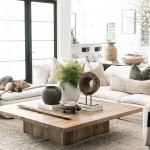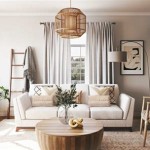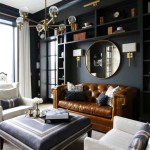Also, avoid using bullet points, numbered lists, or any variations of lists in the article.
Modern Side Tables: Elevating Living Room Aesthetics and Functionality
The modern living room, a space dedicated to relaxation, entertainment, and social interaction, often benefits significantly from the strategic placement of side tables. These compact pieces of furniture, while seemingly unassuming, play a crucial role in both the aesthetics and functionality of the room. Modern side tables, in particular, embody clean lines, innovative materials, and versatile designs, seamlessly blending into a diverse range of interior styles. This article explores the key aspects of modern side tables for the living room, delving into their design principles, material choices, and practical applications for enhancing the overall living experience.
The concept of a side table has evolved considerably over time. Initially, these tables served primarily as utilitarian surfaces for holding lamps, drinks, or books. However, modern side tables transcend this basic functionality, acting as accent pieces, storage solutions, and even subtle artistic statements. The key to their success lies in their ability to complement existing furniture and décor while providing a convenient surface for everyday items.
Design Principles of Modern Side Tables
Modern side table design emphasizes simplicity, minimalism, and a focus on form and function. Clean lines are a defining characteristic, often eschewing ornate detailing in favor of geometric shapes and smooth surfaces. This minimalist approach allows the side table to integrate seamlessly into a variety of interior design schemes, from Scandinavian to mid-century modern to contemporary. The absence of excessive embellishment also ensures that the side table does not distract from other focal points within the room, such as artwork or statement furniture pieces.
The proportions of a modern side table are carefully considered to ensure visual balance and ergonomic accessibility. The height of the table should typically be aligned with the armrest of the adjacent sofa or chair, allowing for easy reach of items placed on the surface. The size of the tabletop should be sufficient to accommodate essential items such as a beverage, a remote control, or a small reading lamp, without being overly large or cumbersome. The overall footprint of the side table should also be proportionate to the size of the living room, avoiding a cluttered or cramped appearance.
Color palettes for modern side tables tend to be neutral and understated, reflecting the broader trends in contemporary interior design. White, black, gray, and natural wood tones are common choices, providing versatility and allowing the side table to blend seamlessly with a wide range of color schemes. However, pops of color can also be incorporated through the use of vibrant accents or bold materials, adding a touch of personality and visual interest to the room. The choice of color should be carefully considered in relation to the existing décor, ensuring a cohesive and harmonious overall aesthetic.
Many modern side table designs incorporate negative space as a key element, creating a sense of lightness and airiness. This can be achieved through the use of open frameworks, slender legs, or floating tabletop designs. Negative space not only enhances the visual appeal of the side table but also contributes to a more spacious and uncluttered feel within the living room. This is particularly beneficial in smaller living rooms where maximizing space is a priority.
Material Choices in Modern Side Table Construction
The materials used in the construction of modern side tables play a significant role in their overall aesthetic and durability. A wide range of materials are available, each offering unique properties and visual characteristics. The choice of material should be carefully considered based on the desired aesthetic, the intended use of the side table, and the overall style of the living room.
Wood remains a popular choice for modern side tables, offering warmth, natural beauty, and versatility. Solid wood options, such as oak, walnut, and maple, provide exceptional durability and a timeless appeal. Engineered wood products, such as plywood and MDF, offer a more cost-effective alternative while still providing a smooth and stable surface. The finish of the wood can range from natural and unsealed to stained and varnished, allowing for a wide range of aesthetic possibilities.
Metal is another common material used in modern side table construction, offering strength, durability, and a sleek, contemporary aesthetic. Steel and aluminum are popular choices, often finished with powder coating or plating to enhance their resistance to corrosion and wear. Metal side tables can be designed with clean lines and geometric shapes, creating a minimalist and industrial-inspired look. The use of metal also allows for intricate designs and open frameworks, adding a touch of visual interest to the room.
Glass is often used in modern side table design, either as a tabletop surface or as a structural element. Tempered glass is a common choice, offering strength and safety. Glass tabletops can be transparent, frosted, or colored, allowing for a wide range of aesthetic options. Glass side tables can create a sense of lightness and airiness in the room, particularly in smaller spaces. The transparency of the glass also allows for the display of decorative objects placed beneath the tabletop.
Other materials, such as concrete, stone, and acrylic, are also gaining popularity in modern side table design. Concrete side tables offer a raw and industrial aesthetic, while stone side tables provide a sense of natural elegance and durability. Acrylic side tables can be molded into a variety of shapes and colors, offering a unique and contemporary look. The use of these unconventional materials can add a touch of personality and visual interest to the living room.
Practical Applications of Modern Side Tables in the Living Room
Modern side tables are not merely decorative objects; they also serve a variety of practical functions within the living room. Their strategic placement and thoughtful use can significantly enhance the overall comfort and convenience of the space.
One of the primary functions of a side table is to provide a convenient surface for holding drinks, snacks, and other items. Placing side tables adjacent to sofas and chairs allows for easy access to these items, eliminating the need to reach across the coffee table or get up to retrieve them. This is particularly beneficial during movie nights or social gatherings when minimizing disruption is desirable.
Side tables can also serve as a platform for displaying decorative objects, such as lamps, vases, sculptures, and picture frames. These items can add personality and visual interest to the room, reflecting the homeowner's individual style and taste. The placement of decorative objects on side tables can also help to balance the overall aesthetic of the room, creating a more harmonious and visually appealing space. The height and size of the side table should be carefully considered in relation to the size and scale of the decorative objects being displayed.
Many modern side tables incorporate storage solutions, such as drawers, shelves, or compartments. These storage features can be used to organize items such as remote controls, magazines, books, and other clutter. By providing a designated space for these items, side tables can help to keep the living room tidy and organized. The type and amount of storage provided by a side table should be tailored to the specific needs of the homeowner and the size of the living room.
Side tables can also be used to create a focal point within the living room. By placing a side table in a prominent location and decorating it with carefully chosen objects, it can draw the eye and add visual interest to the space. This is particularly effective in larger living rooms where creating distinct zones is desirable. The side table can be used to anchor a seating area, define a reading nook, or simply add a touch of personality to an otherwise unremarkable corner.
Furthermore, modern side tables with built-in charging ports or USB outlets are increasingly popular. These features allow for convenient charging of electronic devices such as smartphones, tablets, and laptops. This eliminates the need to run unsightly cables across the room, keeping the space tidy and organized. The integration of charging ports into side tables reflects the growing demand for technology-integrated furniture in modern living spaces.

Lyndsy Modern Sintered Nesting Side Tables Grey Black

Modern Round Small Chair Side Table End For Living Room Faux Marble Homary

Side Tables For Living Room Finn Avenue

7 Modern Side Tables In Riyadh Living Room Inspiration

Bedside Tables Page 4 Modern Space Living

How To Choose A Side Table For Living Room

Cream Round Side Table End Tables Living Room Furniture Ebay

A Collection Of 50 Luxury Side Tables Elegance Opulence Uniquenes

Rectangle End Side Tables West Elm
/fit-in/500x500/media/catalog/product/end/side/tables/202506041355189028.jpg?strip=all)
End Tables Side Povison

